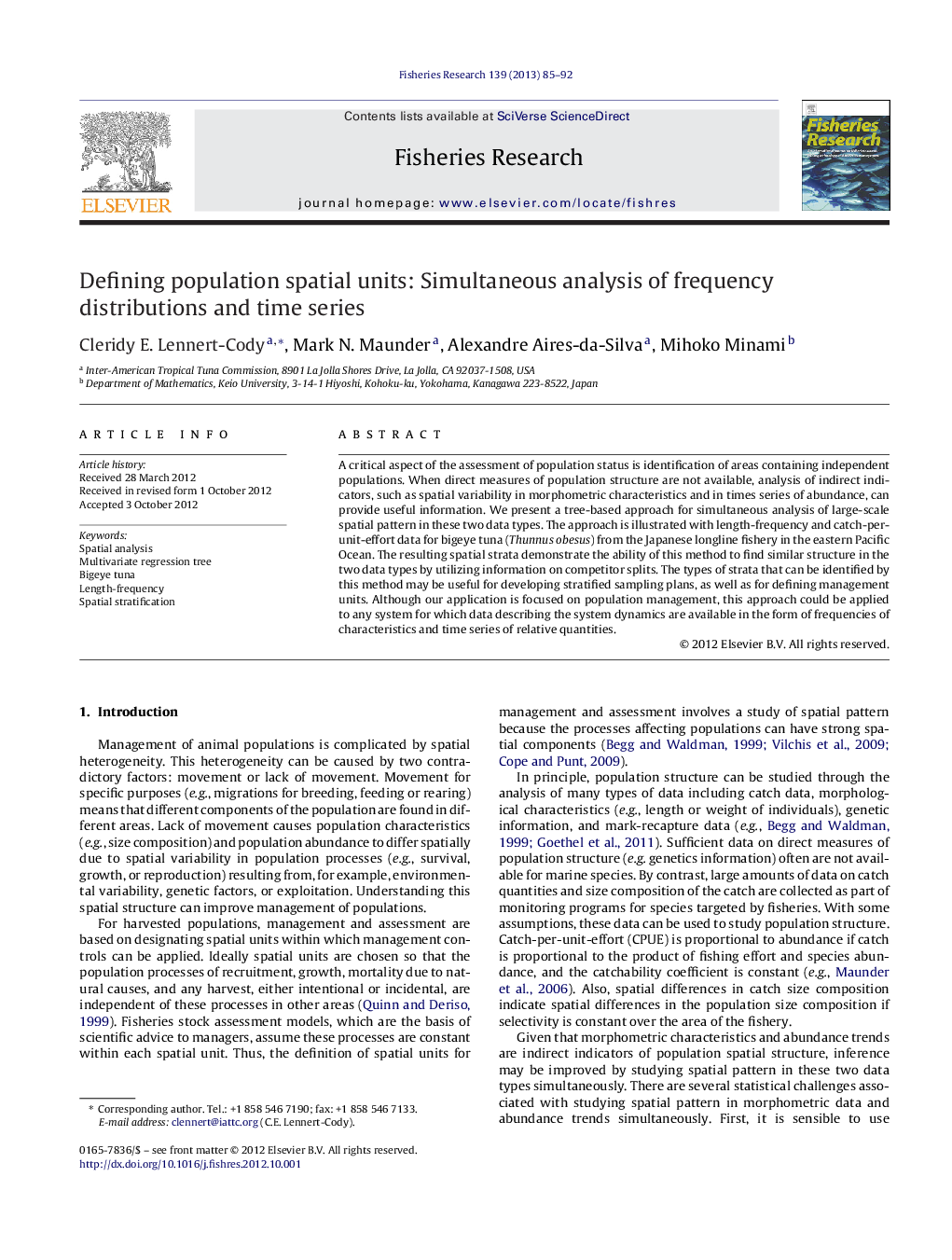| Article ID | Journal | Published Year | Pages | File Type |
|---|---|---|---|---|
| 4543267 | Fisheries Research | 2013 | 8 Pages |
A critical aspect of the assessment of population status is identification of areas containing independent populations. When direct measures of population structure are not available, analysis of indirect indicators, such as spatial variability in morphometric characteristics and in times series of abundance, can provide useful information. We present a tree-based approach for simultaneous analysis of large-scale spatial pattern in these two data types. The approach is illustrated with length-frequency and catch-per-unit-effort data for bigeye tuna (Thunnus obesus) from the Japanese longline fishery in the eastern Pacific Ocean. The resulting spatial strata demonstrate the ability of this method to find similar structure in the two data types by utilizing information on competitor splits. The types of strata that can be identified by this method may be useful for developing stratified sampling plans, as well as for defining management units. Although our application is focused on population management, this approach could be applied to any system for which data describing the system dynamics are available in the form of frequencies of characteristics and time series of relative quantities.
